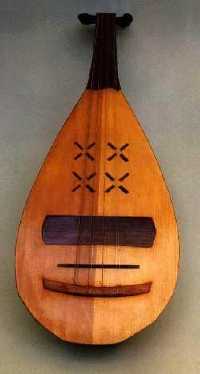
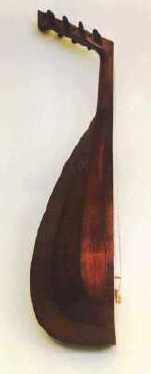
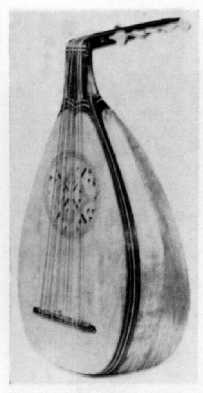
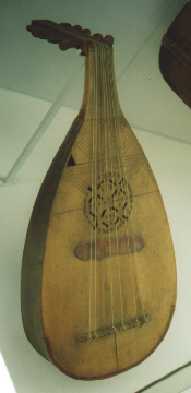
There has been some interest in the Cobsa on the lute net recently, so I thought I'd put up some pictures. The two upper pictures were kindly sent by Ronny Andersson who calls it a Romanian made Koboz; and the B&W one is a Moldavian cobsa from Baines' book on musical instruments. The right hand lower picture is of a Rumanian cobsa in the Deutsches Museum, Munich, Germany
The main things which connect this type of instrument with the very early medieval 'Ud/lute are the very wide string spacing at the bridge with a very narrow spacing at the nut. The narrow neck flowing straight into the body
Compare these pictures from the 13th and 14th centuries. The first shows an Islamic 'Ud in an illustrated tale of Bayâd & Riyâd, set in Bagdad but, because of the architectural details, probably produced in Moorish Spain.
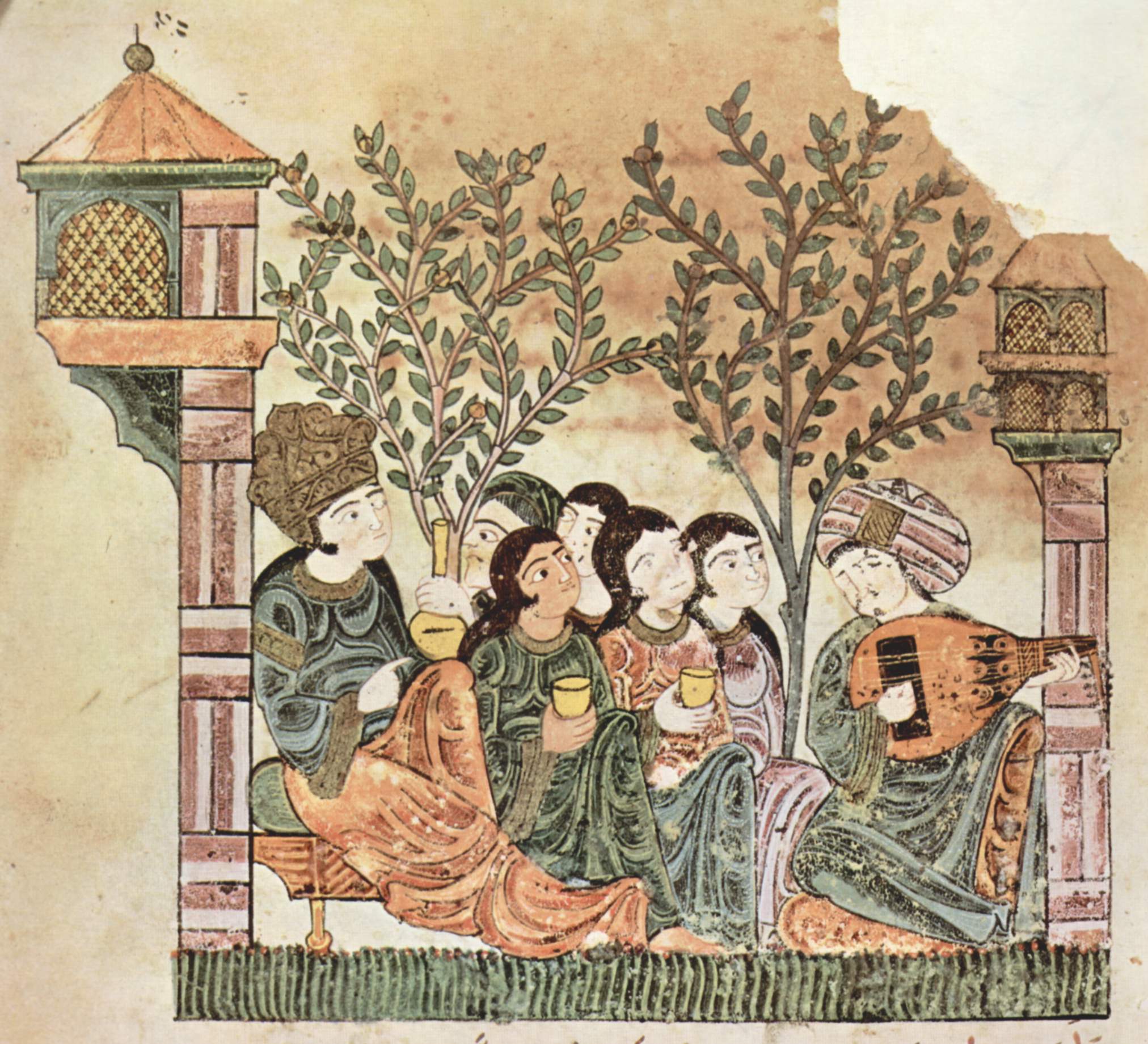
Bayad plays the oud to the lady, Story of Bayâd und Riyâd
c. 1300 Vatican Library, Vatican City, Italy
The second is an illustration from the Wenceslas IV bible produced at the end of the 14th century in Prague and now in Vienna. In both these pictures the “lute” has a very short neck and a very wide string spacing at the bridge just like the cobsa. Both seem to be played with a very substantial plectrum perhaps more suited to producing a tuned percussive effect than a melodic line. That at least has been the function of the cobsa.
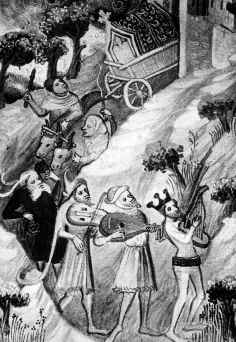
I have some doubts about the bridge arrangement of Ronny's cobsa. It has a glued on string holder then the strings go over a mandolin-style separate bridge. This is not like any of the other cobsas or pictures I've seen, and if true, would distance it considerably from the medieval 'Ud/lute.